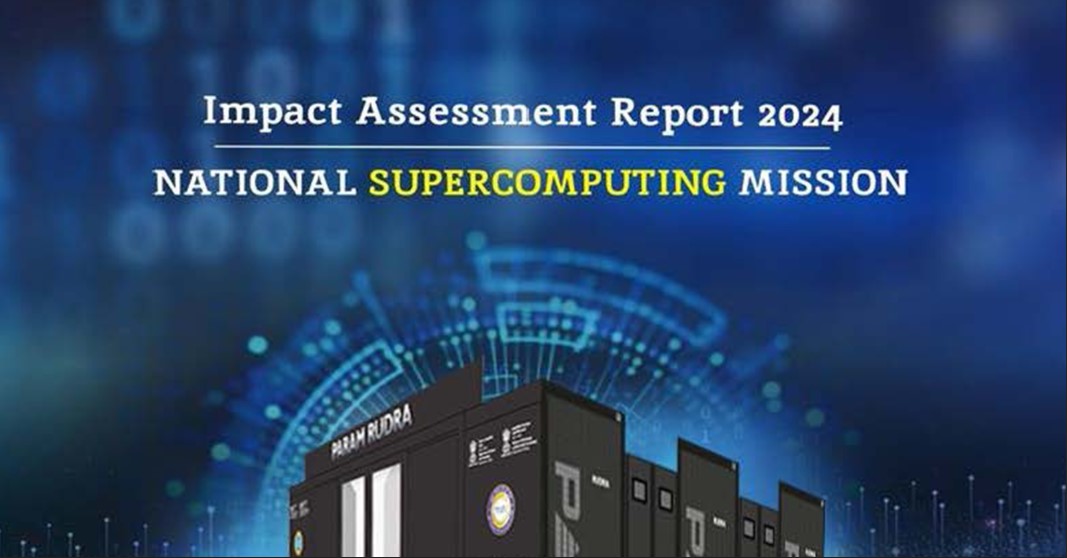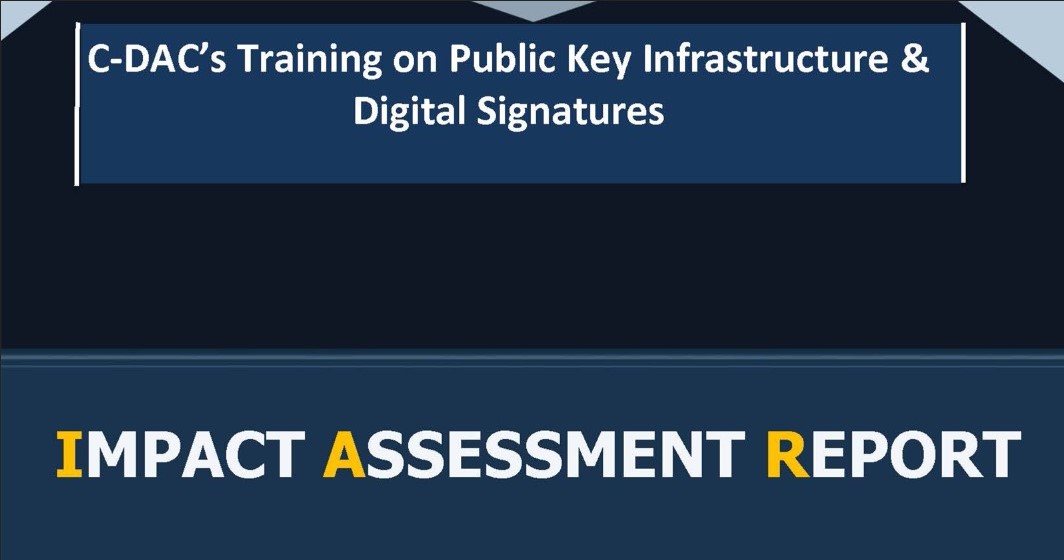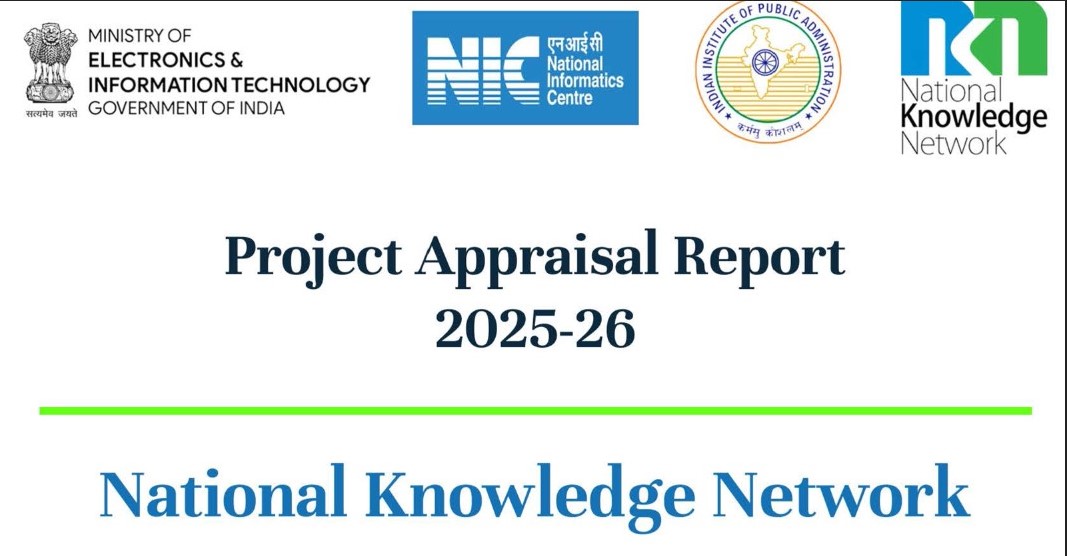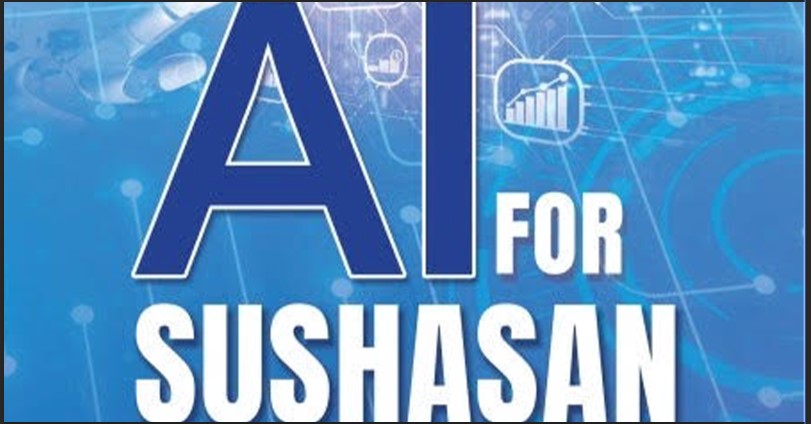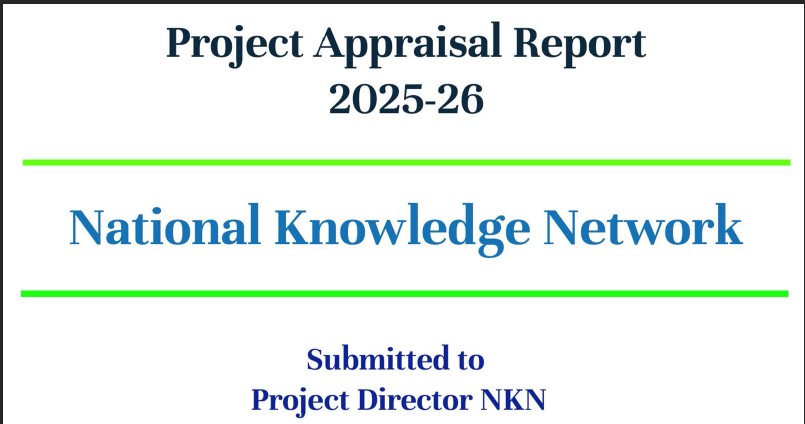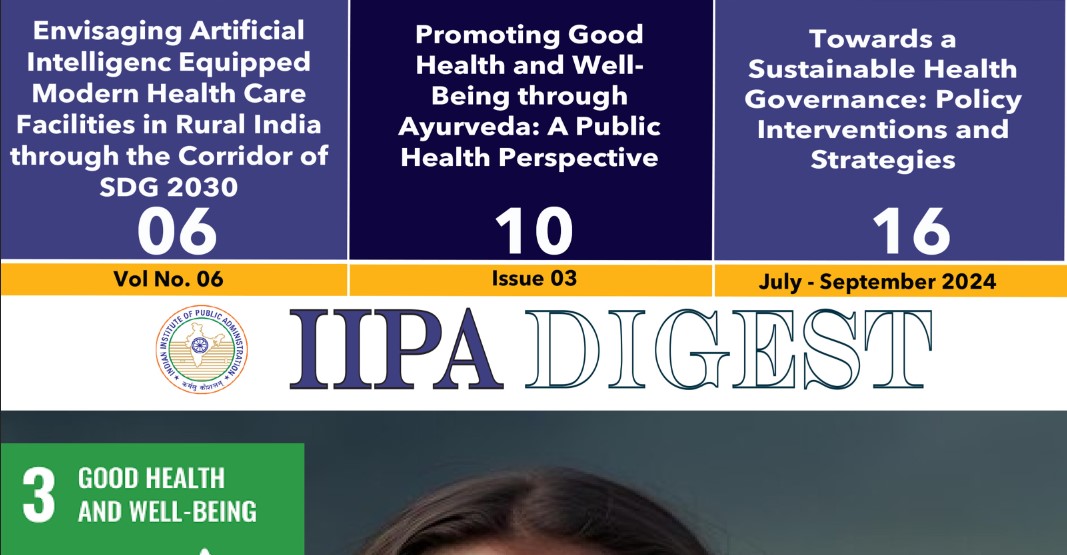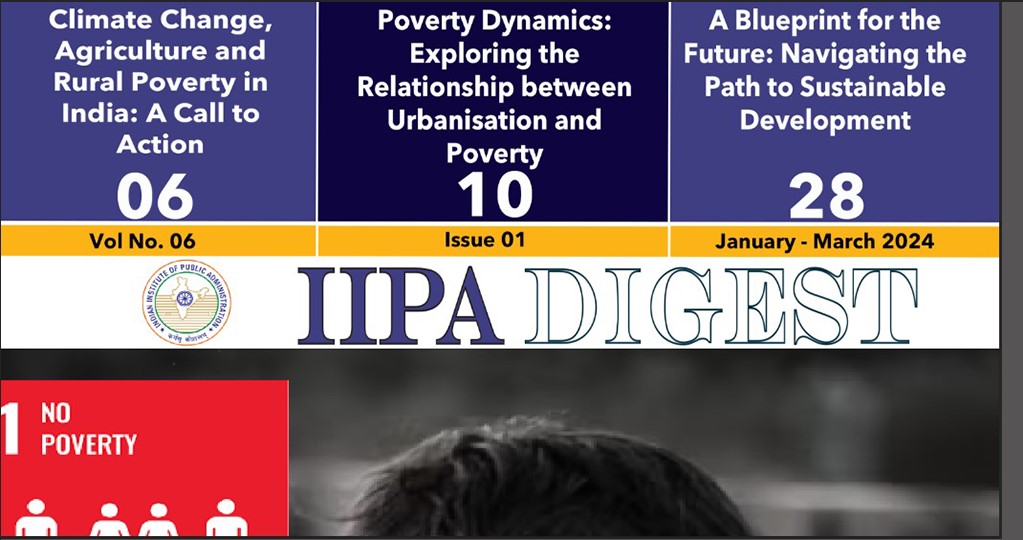Application of AI in Governance
With its ability to assist public institutions in tackling intricate problems in fields like healthcare, agriculture, public safety, education, financial management, and urban planning, artificial intelligence (AI) is fast emerging as a key component of Indian administration. AI integration into government procedures has been made possible by India's quick digitisation and the introduction of a number of AI-focused projects, including NITI Aayog's National Strategy on AI. The nation's desire to modernise public services, improve efficiency, and raise openness is reflected in its adoption. With the support of pertinent data and publications, the next sections explore the numerous uses of AI in Indian administration.
AI has become a vital instrument in healthcare governance, assisting with remote consultations, disease outbreak prediction, and diagnostic improvement. The government released the Aarogya Setu app during the COVID-19 epidemic, which employed AI to track down contacts and identify possible infection clusters. With more than 240 million downloads, the software is among the most popular contact-tracing tools in the world. AI was also crucial in reducing the effects of the healthcare crisis by optimising the distribution of hospital beds, oxygen supply, and vaccinations.
The eSanjeevani telemedicine platform, which leverages AI to enable virtual consultations with physicians, is another significant endeavour. More than 100 million consultations have been completed on the platform as of 2023, giving underprivileged rural communities access to medical treatment. According to NITI Aayog, AI-powered diagnostic tools have helped cut diagnosis mistakes by 15- 20% for conditions like diabetes and TB. By 2025, the healthcare industry in India is expected to reach $638 billion, and artificial intelligence will remain crucial to enhancing public health administration. More over 58% of Indians are employed in agriculture, which continues to be the foundation of the country's economy. However, the industry has several difficulties, including ineffective resource management, insect infestations, and climatic unpredictability. AI is now a vital tool for dealing with these issues. Farmers may make better decisions by using AI- enabled systems such as the Kisan Suvidha app, which provides real-time weather predictions, market pricing, and crop warnings.
Crop yields in places like Punjab and Maharashtra have increased by 20–30% thanks to precision agricultural technologies that use drones, sensors, and AI- based analytics. Additionally, the Indian Council of Agricultural Research (ICAR) reports that 30% less agricultural losses are occurring as a result of the use of satellite images and machine learning algorithms to monitor soil health and forecast crop yields. AI-powered prediction technologies that track rainfall and adjust irrigation are also improving water management. Fair prices and transparency are guaranteed by the National Agriculture Market (eNAM), an AI-powered online trading network that links 2.39 lakh dealers and 1.73 crore farmers. A Markets and Markets analysis projects that between 2021 and 2026, the use of AI in agriculture will expand at a CAGR rate of 22.5%. In order to solve issues of food security and advance sustainable farming methods, artificial intelligence (AI) plays a crucial role in agriculture governance.
By facilitating predictive policing, improving surveillance, and expediting case management, AI tools are transforming public safety and law enforcement. India has deployed AI-driven face recognition systems, or FRS, in public areas, airports, and train stations. Police in Delhi were able to find 3,000 missing children with a 91% success rate because to the usage of FRS. Cities like Hyderabad have seen a 25% decrease in property crimes thanks to AI-based predictive police systems that examine past crime data. Cities like Bangalore and Mumbai are using AI- powered traffic management systems to track traffic and adjust traffic lights in real time. The Mumbai Metropolitan Region Development Authority (MMRDA) said that these technologies had improved traffic flow overall and cut waiting times at crossings by 12%. Public safety is also being improved by AI-powered video analytics systems that identify suspicious activity, especially during major public gatherings. AI's ability to enhance safety and security in both urban and rural regions is demonstrated by its growing application in law enforcement.
India's Smart Cities Mission, which intends to equip 100 cities with smart technology for effective government, heavily relies on artificial intelligence. Cities like Indore and Surat are using AI-powered garbage management systems, which assist cut down on trash processing time by 40%. Smart lighting systems in Pune use 25% less energy by adjusting brightness according to traffic patterns. AI is also being utilised in real-time water management to optimise water distribution and find leaks. AI-powered traffic monitoring systems in Mumbai have cut travel times by 10% to 12%. By employing AI to control public transit, optimise power usage, and monitor air quality, the smart city concept encourages sustainable growth. Grand View Research projects that the worldwide market for AI in smart cities would reach $237.6 billion by 2026, with India spearheading the push for the implementation of AI-powered municipal governance systems.
AI is being used by the Indian government to support individualised and inclusive education. AI is used by platforms such as Diksha, the government's digital learning site, to provide students with adaptive learning solutions that customise information according to their requirements and learning preferences. The Diksha portal has over 1.2 billion views as of 2023, demonstrating the broad use of AI- powered teaching resources.
India's workforce is becoming more skilled thanks in large part to AI. By 2025, India will need at least 250,000 AI specialists to suit business expectations, predicts NASSCOM. The government has started programs like Future Skills Prime, an AI-powered learning platform that offers courses in data science, AI, and machine learning, to close this gap. AI solutions are also being utilised in performance management and recruiting, which helps businesses find talent more quickly. In order to ensure equitable access to learning opportunities and prepare India's youth for the demands of a digital economy, AI must be applied in education governance.
AI has enhanced service delivery, decreased fraud, and increased transparency in financial control. Over 1.3 billion individuals are covered by the Aadhaar biometric identification system, which employs AI to confirm identities and avoid duplicate claims. According to the World Bank, by preventing fraud, this has guaranteed that social programs and subsidies reach the intended recipients, saving the government close to $20 billion. Chatbots and virtual assistants driven by AI are improving public participation across a range of government agencies. For example, the Mitra chatbot from the Income Tax Department increases the effectiveness of tax administration by assisting individuals with tax-related questions. AI is being used by the Reserve Bank of India (RBI) to identify fraudulent transactions and guarantee adherence to legal requirements. The use of AI in financial governance will not stop.
Although AI has enormous promise for governance, there are a number of issues that must be resolved. Given the enormous volume of personal data that AI systems analyse, data security and privacy are serious issues. To control the use of personal data and safeguard people' privacy, the Digital Personal Data Protection Act, 2023, was passed. Furthermore, biases in AI models might occasionally result in unforeseen effects, particularly in fields like recruiting and law enforcement. It will be essential to address these biases through improved algorithmic transparency and data governance. Adoption of AI is also hampered by infrastructure issues, such as poor internet availability in rural regions. Just 27% of Indian rural households have internet connectivity, according to NITI Aayog, underscoring the need for investments in digital infrastructure. Another issue is the lack of qualified specialists. According to NASSCOM, India is in need of over 250,000 AI specialists, which emphasises the necessity of extensive reskilling programs. The use of AI in Indian administration appears to have a bright future, notwithstanding these obstacles. It is anticipated that AI will become more important in predictive governance, allowing authorities to foresee issues like crime patterns, disease outbreaks, and natural catastrophes. AI technologies for case management and case backlog reduction are also being investigated by judicial systems. To fully realise AI's promise in governance and guarantee that the technology serves the public good, cooperation between the government, academic institutions, and business sectors will be crucial.
Conclusion
In conclusion, by boosting efficiency, encouraging transparency, and improving service delivery, AI is revolutionising Indian governance. AI applications are fostering innovation and resolving pressing issues in a variety of fields, including healthcare, agriculture, law enforcement, and education. AI has the ability to completely transform government, making it more responsive, inclusive, and efficient with the correct investments and policies. The nexus of technology and governance will be crucial in determining India's destiny as it moves closer to being a leader in artificial intelligence.
2.1 AI FOR DATA-DRIVEN DECISION-MAKING AND GOVERNANCE
A key technology that is pervading many industries, including government decision-making, is AI. Governments have only recently begun to realise how revolutionary AI may be in improving the efficacy and efficiency of their decision- making processes. Governments can use data-driven insights to guide their decisions and create more evidence-based and well-informed policies by utilising artificial intelligence. Governments can use AI to examine enormous volumes of data, spot trends, and find patterns that would not be seen through manual study. This makes it possible for policymakers to make better decisions and forecasts in an effort to successfully address difficult societal issues. Additionally, AI can help government operations run more smoothly by automating repetitive work and freeing up important human resources for development. The potential of AI to promote data-driven perspective and enable the effective formulation and execution of strong policies and plans may be tapped into through the use of large datasets. Additionally, the transition to data-driven government is improving transparency and making participatory governance viable. AI is able to recognise concerns and priorities that require urgent action by analysing social media comments and public grievances. It can also help lawmakers gather public opinion for public law consultations and manifesto preparation.
Predictive analytics with AI is a state-of-the-art method for accurately predicting future trends and making data-driven decisions. You may get profound insights, spot new possibilities, and instantly reduce risks by incorporating AI. This paper will teach you how to use AI for predictive analytics, how it is transforming several industries, and how to apply this cutting-edge method inside your own company.
The abundance of data in today's corporate environment has completely changed how decisions are made across all industries. At the heart of this revolution are AI and predictive analytics, which allow businesses to use massive quantities of data to improve customer experiences, streamline processes, and make well- informed choices. Using statistical algorithms and machine learning approaches, predictive analytics examines past data to find patterns that may be used to predict future events. Organisations may get fresh insights, spur innovation, and keep a competitive advantage by combining AI and predictive analytics. This paper delves into the approaches, best practices, and applications that may help businesses succeed as it examines how to employ AI for predictive analytics and more intelligent decision-making.
Recognising the Basics of Predictive Analytics
Prior to delving into the use of AI in predictive analytics, it is critical to comprehend the underlying ideas that guide this effective strategy. Data collection, data preparation, model selection, model training, and prediction are the stages involved in predictive analytics. Data collection, the first stage, involves compiling past information from several sources, such as social media platforms, transaction logs, customer databases, and outside datasets. This heterogeneous data set is the basis for producing significant insights. Organisations that prioritise data-driven decision-making are five times more likely than their rivals to make choices quickly, according a Deloitte analysis.
To guarantee accuracy and relevance, the data is carefully cleaned and prepared after it is gathered. In order to preserve consistency, missing values must be filled in, duplicates must be removed, and data must be normalised. The fact that 60% of data scientists' work is devoted to data preparation highlights the significance of this step in the predictive analytics process and is a critical statistic to take into account. Organisations might choose the best statistical or machine learning models to analyse the data after it has been prepared. The choice of model is crucial because different models—whether for regression, classification, or time series analysis—are better suited for varying kinds of predictions. 75% of businesses, predicts Gartner, will operationalise AI by 2025, underscoring the expanding trend of using AI for predictive analytics.
AI's Place in Improving Predictive Analytics
By increasing the speed and precision of data processing and analysis, AI significantly improves predictive analytics. Conventional predictive analytics approaches frequently depend on statistical methods and manual data processing, which can be laborious and may not adequately account for the complexity of contemporary datasets. Conversely, AI makes it possible for businesses to automate a large number of predictive analytics process steps. Large amounts of data may be swiftly sorted through by machine learning algorithms, which can also be used to spot patterns and produce insights that would be difficult to obtain by traditional means.
The capacity of AI to learn and adapt over time is one of the biggest benefits of using it into predictive analytics. AI systems may continually improve their models as new data becomes available, producing predictions that are increasingly accurate. For example, in the retail industry, artificial intelligence-powered predictive analytics may estimate client demand by examining past sales data, seasonal trends, and outside variables like weather patterns. Companies may cut inventory costs by 20% to 50% by employing AI-driven predictive analytics for demand forecasting, claims McKinsey. AI may also improve an organization's capacity to evaluate unstructured data, including social media postings and customer reviews, giving them a better understanding of the attitudes and preferences of its customers.
COVID-19 and AI in India
India's reaction to COVID-19 was greatly aided by AI which made data-driven decisions possible in the areas of public policy, government, and healthcare. Infection patterns were predicted using AI-based prediction models, which helped authorities allocate resources effectively and carry out targeted lockdowns. For example, state governments were able to concentrate containment efforts in high- risk areas like Delhi and Mumbai with the use of real-time dashboards monitoring case increases. By locating hotspots and ranking probable positive cases, AI-driven analytics improved COVID-19 testing, helping to reach over 1.5 million tests per day by the middle of 2021. The Indian Council of Medical Research (ICMR) created AI-powered diagnostic tools that allowed for the quicker identification of COVID-related symptoms using chest X-ray analysis, cutting down on diagnosis times by 30–40%. AI models anticipated oxygen and ventilator shortages during the second wave, allowing for the proactive delivery of medical supplies, while chatbots and virtual assistants assisted in handling patient enquiries, relieving the strain on medical staff.
By sending users exposure notifications depending on their proximity to COVID-19 instances, the AI-powered Aarogya Setu mobile app was essential in contact tracking. It was a crucial tool for tracking infections, with over 200 million downloads, but it also highlighted privacy issues. Through the CoWIN platform, which oversaw over 8 million appointments daily during peak hours, AI played a crucial role in India's vaccination program by guaranteeing timely tracking and orderly immunisations. By the end of 2022, India was able to distribute more than 2 billion doses thanks to AI algorithms that predicted vaccination demand and optimised distribution to both urban and rural regions. Furthermore, AI- enabled drones tracked social distancing in congested places, and AI-powered solutions slashed the time it took to handle grievances linked to COVID by 25%. Notwithstanding obstacles like worries about data privacy and unequal internet access in rural regions, artificial intelligence (AI) was crucial in handling the crisis and set the stage for future government that is more effective.
Business Intelligence and Fraud Analytics (BIFA)
The way Indian businesses identify fraud, control risks, and make data-driven choices is being revolutionised by AI-powered Business Intelligence and Fraud Analytics (BIFA). Fraud threats have increased in India as e-commerce and digital transactions have grown. A 2023 Deloitte analysis claims that fraud-related activity in the banking, insurance, and e-commerce industries increased by 25% in India. The use of AI-based BIFA solutions has increased as a result of this growing danger.
AI methods like machine learning (ML) and natural language processing (NLP) are used in the financial services industry to analyse massive datasets in real-time and identify fraudulent transactions and behavioural abnormalities. To reduce the risks of cyber frauds, particularly in UPI and online banking, the Reserve Bank of India (RBI) has ordered financial institutions to put AI-based fraud detection systems in place. In 2022, banks were able to save losses of almost ₹1.2 trillion ($14.4 billion) because to AI-driven fraud analytics.
BIFA systems are also often used in the insurance industry, where artificial intelligence (AI) is used to identify fraudulent claims by examining policy papers, historical behaviour, and trends. By using AI-based analytics to spot fraudulent claims, insurers such as HDFC Life and ICICI Lombard can reduce payouts by 15% to 20% a year. Beyond detecting fraud, AI-powered business intelligence solutions assist companies in improving decision-making, forecasting trends, and streamlining procedures. AI-powered dashboards are being used by Indian businesses more and more to track key performance indicators (KPIs), guaranteeing data accuracy and expediting reporting. According to a KPMG report, 75% of Indian businesses want to double their investments in AI-based business intelligence solutions by 2025, with a 20–25% yearly growth rate anticipated in this market.
Nonetheless, issues including high implementation costs, data privacy concerns, and the demand for qualified personnel continue to exist. With the potential to cut operational losses by 30–40% over the next 10 years, AI-powered BIFA is emerging as a key component of business governance and compliance despite these obstacles. For businesses looking to gain a competitive edge in India's rapidly changing business environment, this technology is crucial.
Metering System of Water Management
Rapid urbanisation, population increase, and water shortages have made water management in India a crucial area of concern. By enhancing water distribution, monitoring, and efficiency, the industry is changing as a result of the integration of AI with smart metering systems. India's cities lose 40–50% of their water supply because to leaks, illegal use, and ineffective infrastructure. According to the Ministry of Jal Shakti, smart metering and AI-driven solutions may save waste by up to 30%, but traditional systems are unable to manage these losses. AI tools like machine learning and predictive analytics examine use trends and instantly identify irregularities like leaks or meter manipulation.
As a result of programs like the Atal Mission for Rejuvenation and Urban Transformation (AMRUT), 10 million smart water meters have been installed throughout cities by 2023. These meters assist authorities in keeping an eye on home consumption and lowering non-revenue water (NRW), which in certain Indian towns makes up 30–60% of the water supply. Automated invoicing provided by AI-enhanced meters reduces human error and enhances revenue collection. By examining use statistics, demographic trends, and weather patterns, AI also aids in the forecasting of water demand. For example, the Pune Smart City project optimises pumping schedules and ensures equal distribution by using AI-based solutions for water supply management. In a similar vein, IoT-based meters linked to AI systems have been used in Hyderabad and Bengaluru to identify leaks and send out notifications.
Over the next five years, it is anticipated that the use of AI-powered water meters would rise by 18–20% yearly due to an increase in government initiatives and business water sector expenditures. To guarantee widespread acceptance, however, issues including high upfront expenditures, limited infrastructure, and public awareness must be resolved. These technologies have the potential to greatly aid India's objective of decreased NRW and sustainable water management if they are effectively scaled.
Tax Evasion in India
Underreported income and unpaid taxes result in an estimated ₹5.4 lakh crore ($65 billion) in losses per year, making tax evasion a major problem for India's economy. In order to combat this, the Indian government is using Machine Learning (ML) and Artificial Intelligence (AI) more and more to identify tax evasion, enhance compliance, and expand the tax base.
The Income Tax Department is analysing Big Data from sources like as bank transactions, Goods and Services Tax (GST) reports, income filings, and expenditure habits using AI-powered systems. For example, AI algorithms signal possible audit cases when they find differences between stated income and high-value activities, such luxury purchases, real estate transactions, or international trips. This method found questionable transactions of more than ₹1.3 lakh crore ($16 billion) in the fiscal year 2022. By comparing Aadhaar, PAN, and GST data, the Central Board of Direct Taxes (CBDT) also use AI to track non-filers. Approximately 58,000 people and businesses that had engaged in high-value transactions but had not filed returns were found using AI-based algorithms. Furthermore, since 2020, Input Tax Credit (ITC) scams totalling about ₹1.2 lakh crore have been identified thanks to AI-assisted inspection in GST processes.
The government introduced Project Insight, an AI-powered platform intended to increase compliance and decrease evasion. The system analyses social media, spending patterns, and third-party data to look for discrepancies between stated income and lifestyle choices. It is anticipated that by taking these steps, the tax compliance rate will rise by 5–10% yearly, improving revenue collection.
Notwithstanding these achievements, there are still issues, such as the expensive price of AI systems, worries about data privacy, and the demand for qualified workers. However, it is anticipated that the use of AI in tax administration would further curb tax evasion, assisting India in reaching its goal of raising the tax-to- GDP ratio from 10% to 15% over the course of the next ten years.
Some of the Focus Areas of AI
1. Improving Public Service Delivery: Significant amounts of government data, particularly sensor, social media, and feedback from citizens, can be examined by AI to discover areas where service delivery can be enhanced. Public services can then be designed and implemented with greater effectiveness and efficiency using this information.
2. Enhancing Data-Driven Governance: AI can be used to glean insights from public data to improve decision-making, boost transparency and accountability, and impact policy. Governments may better serve the interests of the people they represent and build a society with greater equity and justice by utilizing data to support their decisions.
3. Reducing Administrative Challenges: AI can automate various administrative duties, especially data processing, form processing, and document verification. Government workers may be able to focus on more intricate and strategic duties as a result, which could enhance productivity and reduce expenditures.
4. Ethical Consideration surrounding AI usability in Government : As AI develops, ethical issues pertaining to its application in governance are becoming more and more significant. The possibility of bias in AI algorithms is one important factor to take into account. These algorithms have the potential to reinforce and even magnify current disparities if they are developed with biased assumptions or trained on biased data. Biased algorithms have the potential to produce discriminatory results and unfair regulations, which has significant ramifications for government decision-making. Governments must place a high priority on accountability and transparency in AI systems, making sure that these tools are routinely examined and vetted for bias.
AI could potentially use to boost each one of the four main categories of data analytics
1. Descriptive Analytics: "What happened?" is a descriptive analytics question.
Descriptive analytics driven by AI offers a thorough and transparent insight of historical performance. AI can go through vast amounts of structured and unstructured data to find patterns, trends, and correlations by using machine learning algorithms and Natural Language Processing (NLP). Imagine about a retailer using AI algorithms to examine consumer data and find patterns and preferences in purchases.
2. Diagnostics Analytics: "What caused it?" By quickly locating underlying causes and correlations in complicated datasets, artificial intelligence (AI) enhances diagnostic analytics and makes it possible to solve problems more precisely and quickly. The healthcare industry provides an illustration of how AI enhances diagnostic analytics. AI systems examine patient data, such as imaging scans, test findings, and medical histories. Compared to conventional techniques, these algorithms are faster and more accurate at determining the underlying causes of illnesses and ailments. AI, for example, may identify patterns in radiological scans that point to the early stages of illnesses like cancer, giving physicians important information to help with precise diagnosis and tailored treatment regimens.
3. Predictive Analytics: Analytics for prediction: "What could happen next?"
By employing sophisticated algorithms to examine past data and identify trends, artificial intelligence (AI) improves predictive analytics and makes it possible to predict future trends and results with more accuracy. Machine learning models are used in financial services to estimate stock prices and investment risks by analysing historical market data and economic factors. This helps investors make better decisions and better manage their portfolios.
4. Prescriptive Analytics: "What should we do next?"
AI can be used by analysts to not only evaluate data but also to make pragmatic recommendations for improved decision-making processes and the best course of action in certain situations. Supply chain management is one area where AI is utilized in prescriptive analytics. AI systems examine data on shipping circumstances, demand projections, and inventory levels. By suggesting the most optimal order quantities and delivery times, these systems reduce expenses and boost productivity.
Use of AI for Predictive Analytic
Predictive analytics with AI necessitates a systematic methodology. The first step for organisations implementing predictive analytics should be to clearly define their projects. This entails determining certain business issues or possibilities that need to be investigated. Setting quantifiable objectives is essential to evaluating the effectiveness of predictive analytics initiatives. A Harvard Business Review research found that companies with well-defined objectives had a threefold higher chance of success with their analytics programs.
The following phase is data collecting, during which businesses compile pertinent past data from a range of sources. Predictive models are constructed using this data as a basis. To guarantee its quality and applicability, the data must be carefully cleaned and prepared when it is gathered. The performance of predictive models is greatly impacted by data preparation, making it an essential step in the process. According to an IBM survey, data preparation chores account for 80% of data science initiatives, underscoring the need of devoting time and money to this step.
Organisations need to select the appropriate prediction model after the data has been prepared, taking into account the goals and characteristics of the data. For distinct predicting tasks, ranges of modelling approaches are available, such as neural networks, decision trees, and regression analysis. Regression analysis, for example, works well for predicting continuous outcomes, whereas classification models work best for predictions that are categorical. Cross-validation approaches should be used by organisations to assess model performance and adjust hyper parameters for best outcomes. Organisations may implement their predictive models into production systems after completing model training and assessment. This enables them to make predictions in real time and facilitate data-driven decision-making.
Figure 1: Types of Data Analytics
Top Techniques for Using Predictive Analytics Effectively
Organisations should follow a few best practices to optimise the efficacy of AI- driven predictive analytics. First and foremost, data integrity and quality must be given top priority. Accurate predictive models depend on high-quality data, thus businesses should have strong data governance procedures in place to guarantee the consistency and dependability of their data. According to an Experian poll, just 40% of organisations are confidence in their data quality, despite the fact that 95% of them acknowledge it as a crucial success component.
Second, companies should encourage cooperation between IT teams, business stakeholders, and data scientists. Transforming analytical ideas into workable tactics requires interdisciplinary teamwork. Organisations that support cross- functional cooperation in analytics projects are 4.5 times more likely to see better results, according to McKinsey. Additionally, companies have to give their predictive analytics products' user interfaces top priority. Without requiring in- depth technical knowledge, decision-makers should be able to quickly evaluate and act on predicted insights.
Adopting a culture of ongoing learning and development is another essential excellent practice. Organisations should set up procedures for routinely updating predictive models in order to adjust to shifting market conditions, since AI algorithms thrive on fresh data. Establishment that prioritise continuous learning in their analytics programs see a 36% boost in prediction accuracy, according to research from Forrester. Lastly, businesses need to make sure that ethical standards and data privacy laws are followed. 62% of customers are worried about how their data is used, according to an Accenture survey, which emphasises the significance of accountability and transparency in predictive analytics initiatives.
AI Uses in Predictive Analytics throughout Industries
Predictive analytics powered by AI is being applied in a wide range of sectors, changing how businesses function and make decisions. Predictive analytics is used in the banking industry for risk management, fraud detection, and credit scoring. Financial institutions can reduce risks by using AI algorithms to evaluate transaction data from the past and spot trends that point to fraudulent activity. McKinsey claims that predictive analytics may cut fraud losses by as much as 50%, demonstrating how it can improve financial security. Predictive analytics helps supply chain managers manage inventories, optimise logistics, and enhance demand forecasts. AI may assist businesses in making well-informed decisions on inventory replenishment and distribution strategies by examining past sales data and market trends. Demand prediction accuracy may increase by 15% for companies using predictive analytics in supply chain management, claims Gartner.
Lastly, predictive analytics may improve production efficiency and maintenance plans in the industrial sector. Artificial Intelligence (AI) can forecast when machinery is likely to break by evaluating equipment performance data. This enables businesses to schedule preventative maintenance and save downtime. Predictive maintenance may save maintenance costs by 30% to 50%, according to a Deloitte research, highlighting its importance for operational effectiveness. One of the main responsibilities of every data-driven organisation these days is data analysis. It helps businesses to transform unstructured data into actionable insights that can improve decision-making. The nice thing about data analytics is that a wide range of tools are available for both experts and non-experts in the area. With the use of these tools, you can track, analyse, and visualise data to gain the insights necessary to meet your company objectives.
Figure 2: AI Tools for Data Analysis
Tableau
Ask Data and Explain Data, two AI-driven capabilities, are integrated into Tableau, a potent data visualisation tool. With its user-friendly visualisations, it streamlines intricate data analysis and assists users in discovering new information.
Power BI
Popular business intelligence software from Microsoft, Power BI, uses AI to provide rapid insights, natural language queries, and sophisticated analytics. It is easy to use and suitable for data visualisation and analysis.
Python using Libraries (such as Scikit-Learn, NumPy, and Pandas)
Python is a flexible programming language that may be used for machine learning and data analysis. A variety of tools and techniques are available for data manipulation, analysis, and modelling through libraries like as Pandas and Scikit- Learn.
RapidMiner
Predictive modelling, data preparation, and automated machine learning are all included in RapidMiner, an end-to-end data science platform. It is appropriate for both novice and experienced data analysts.
DataRobot
DataRobot is an automated machine learning platform powered by AI. Data scientists and analysts may now more easily create and use machine learning models thanks to its streamlined methodology.
QlikSense
Qlik’s one-of-a-kind associative analytics engine brings unmatched power to explore your data and uncover insights.
GPT Enabled Data Analytics
D3.js
A JavaScript framework called D3.js (Data-Driven Documents) is used to create interactive data visualisations in online applications. It's perfect for making unique data visualisations because it's quite customisable.
Excel
Excel is a spreadsheet tool developed by Microsoft that is part of their Office suite of business applications. Users may format, arrange, and compute data in a spreadsheet using Microsoft Excel.
Google Cloud AutoML
The creation of unique machine learning models is made easier by Google Cloud AutoML. It is easy to use. With the help of a set of machine learning tools called Google Cloud AutoML, developers can create unique models with very little code. It provides vision, language, and structured data solutions that automate forecasting, picture identification, and sentiment analysis. AI development is made easier to understand with autoML, even for non-experts.
Conclusions
To sum up, the incorporation of artificial intelligence (AI) into predictive analytics offers businesses previously unheard-of chances to improve operational effectiveness and make more informed decisions. Through comprehension of predictive analytics principles, adoption of optimal methodologies, and utilisation of artificial intelligence's capabilities, enterprises may obtain significant insights that propel innovation and gain a competitive edge. Organisations may anticipate notable gains in accuracy, efficiency, and overall business performance as they use AI-driven predictive analytics more and more. Predictive analytics is a powerful tool that may help businesses negotiate the complexity of today's business environment and achieve sustainable success. The data-driven future is here.
2.2 USABILITY OF AI IN HEALTHCARE SECTOR
AI has the potential to completely transform healthcare in India, a country with a population of over 1.4 billion people, a mix of rural and urban healthcare demands, and limited access to high-quality medical treatment in many locations. AI may revolution health issues, including as increasing the precision of diagnoses, relieving the workload of medical staff, better treatment results, and facilitating more individualised patient care.
We will examine how artificial intelligence (AI) is changing healthcare in India with thorough examination, as well as the existing environment, government efforts, the function of startups, and important data that demonstrate the influence of AI on healthcare delivery. We'll also look at the potential and difficulties associated with implementing AI-driven healthcare solutions.
Figure 3: AI in Healthcare Sector
India's Health Care System: Challenges
It's critical to comprehend India's healthcare system before delving into AI's potential in the field. India is among the few developing nations that is setting the standard for AI in healthcare. India plans to invest 11.78 billion USD in AI by 2025, boosting the nation's GDP by $1 trillion USD by 2035 in the primary sector. India has a number of healthcare issues to deal with:
Restricted Access to Healthcare: A sizeable section of India's population lives in rural areas, where there is little access to high-quality medical treatment. Only 25% of India's healthcare system is available to its 68% of the population living in rural areas, according to the National Health Profile 2021.
Lack of Medical Professionals: India is severely short-staffed with medical professionals, especially in the speciality areas. The World Health Organisation (WHO) reports that India's doctor-patient ratio in 2021 was 1:1,456, which is below than the 1:1000 WHO-recommended ratios.
Increasing Healthcare Costs: A large section of the population cannot afford the growing expense of healthcare. According to a Public Health Foundation of India (PHFI) report, healthcare expenditures drove almost 55 million Indians into poverty in 2019.
Chronic Illnesses: About 60% of fatalities in India are caused by non- communicable diseases (NCDs), which include diabetes, heart disease, and cancer. By 2030, there will be over 100 million diabetes patients in India, and the prevalence of cardiovascular illnesses is rising quickly, predicts the Ministry of Health and Family Welfare.
AI is becoming more widely recognised as a tool that may close gaps in healthcare and enhance results in light of these difficulties, particularly in the areas of medication discovery, diagnosis, treatment planning, and patient care.
The Role of AI in Healthcare
In order to help healthcare personnel provide better patient care, AI in healthcare refers to the application of machine learning algorithms, natural language processing (NLP), robots, and other AI approaches. AI is useful in the following areas:
Diagnostics: AI algorithms can accurately identify illnesses including cancer, TB, and fractures by analysing medical pictures such as X-rays, CT scans, Track Medicine and MRIs. In order to forecast the danger of sickness, AI systems may also evaluate genetic data.
Personalised Medicine: Based on a patient's genetic composition, medical background, and other factors. By using AI to create customised treatment regimens based on a patient's genetic composition, medical background, and lifestyle choices, treatment outcomes can be increased.
Robotic Surgery: Robotic surgery is a process in which your surgeon performs the operation using a robotic equipment. The gadget contains a robotic arm that is capable of holding tiny surgical tools. Your surgeon uses a viewing screen and controllers to manoeuvre the robotic arm. A surgeon cannot be replaced by robotic surgery. They employ a variety of strategies.
Telemedicine Healthcare: AI-driven telemedicine systems can guarantee access to healthcare services by offering patients in faraway locations virtual consultations.
Drug Discovery: By evaluating enormous chemical structure datasets and forecasting which compounds are most likely to be successful against particular ailments, AI can expedite the drug discovery process.
Administrative Efficiency: AI may reduce the stress on healthcare workers by streamlining administrative processes including billing, appointment scheduling, and patient record management.
Ethical and Cultural Considerations: Because of India's great variety, implementing AI in healthcare presents difficult ethical and cultural issues. A multicultural, multilingual society with differing degrees of health literacy adds layers to issues like algorithmic bias, informed consent, and privacy. There are questions over the applicability of AI algorithms employed in Indian healthcare settings that were trained on datasets largely from Western nations.
Cost and Resource Allocation: India's resource-constrained health industry has a major obstacle in the form of the high costs of creating, deploying, and sustaining AI systems in healthcare. Long-term cost reductions are promised by AI, although the initial outlay may be high. AI implementation in healthcare often costs between USD 20,000 and USD 1,000,000, which is a substantial amount for many healthcare facilities. Considering that India's healthcare expenditures in 2020–21 accounted for just 1.8% of its GDP, this cost hurdle is very difficult.
Develop a Tiered AI Implementation Plan: India may use a tiered AI implementation plan to narrow the digital gap. Advanced AI systems for diagnosis and treatment planning can be deployed at tertiary care institutions in metropolitan regions with superior infrastructure. Focus first on implementing more straightforward, reliable AI solutions for remote regions that can function with spotty connectivity, including offline telemedicine platforms or AI-powered smartphone apps for basic health tests. For instance, initiatives tailored to rural healthcare might be added to the 'NITI Aayog AI for All' effort. The Aarogya Setu app's performance shows that mobile health technologies have the potential to be widely used in India. DRDO’s Centre for Artificial Intelligence and Robotics (CAIR) has developed ATMAN AI, an AI-based COVID detection application software using Chest X-rays (CXRs), which can classify the images into normal, COVID-19, and pneumonia classes using a limited number of sample images. The Ministry of Health and Family Welfare has also implemented projects wherein AI-based models are being used to analyse X-Ray and mammography images to detect tuberculosis and breast cancer.
Conclusion
AI in healthcare is quickly changing the medical environment in India by improving operational efficiency, diagnosis, and therapy. The Indian healthcare market is projected to reach $372 billion by 2025, and AI has the potential to boost this industry by up to $25 billion by optimising procedures, according to NASSCOM. AI applications in India include telemedicine for remote monitoring, customised treatment programs, and early illness identification. For instance, doctors are using AI-powered tools like IBM Watson to help them design cancer treatments, while businesses like Qure.ai have created AI systems that can read radiological images with over 90% accuracy.
Additionally, AI-driven solutions for controlling chronic illnesses and rural healthcare—where access to specialised specialists is limited—benefit India's enormous population. By creating a digital health ecosystem, government programs like the National Digital Health Mission (NDHM) further speed up the use of AI. According to Analytics India Magazine, the healthcare AI business in India is expanding at a CAGR of almost 40% despite obstacles including data protection and infrastructural shortages. AI has the potential to enhance healthcare delivery, lower operating costs, and close the gap between rural and urban areas with more investment and innovation. But in order to realise its full potential, India has to prioritise strong regulations, interoperability, and moral standards to guarantee the safe and efficient application of AI.
The fundamental technology infrastructure needed to enable AI systems is lacking in many healthcare institutions, especially those in rural and semi-urban regions. Only 3,496 (45%) of the 7,821 Health and Wellness Centres in rural India, according to a recent survey, have a power backup facility. Despite the fact that many Indian healthcare institutions keep Electronic Health Records (EHRs), neither explicit recommendations about the appropriate retention period for medical information nor options for integrating this data for analysis exist.
2.3 USABILITY OF AI IN AGRICULTURE SECTOR
India's economy is predominantly based on agriculture, which employs a sizable portion of the workforce and accounts for a sizable portion of the GDP of the nation. The World Bank estimates that as of 2023, 42% of India's labour force was involved in agriculture; nevertheless, the sector's share of the country's GDP had decreased from 50% in 1950 to around 16% in 2023. The agricultural industry is crucial, but it also confronts several obstacles, such as low production, uneven land ownership, poor infrastructure, and climate change susceptibility. Technological interventions, particularly AI, are emerging as transformative tools to solve these low yield drops fixed security problems.
AI has the power to enhance agriculture challenges of real time growth and accelerate economy by increasing its intelligence, productivity, and sustainability. AI-powered technologies are revolutionising agricultural management, weather forecasting, soil health monitoring, and resource optimisation. This essay examines the use of AI to Indian agriculture, emphasising the opportunities, implementation obstacles, and prospects for future growth. We'll also go into some important data that show how AI is now applied in agriculture and what effects we anticipate it will have. There are so many technology driven initiatives have been taken by government like Kisan e-Mitra, VISTAAR, PM Kisan Bot. AI usage for learning education. The NPCI voice method for payments through UPI. In order to respond to questions on the PM Kisan Samman Nidhi program (PM-KISAN) in the languages that farmers speak, the Ministry of Agriculture & Farmers Welfare created Kisan e-Mitra (AI Chatbot) – Farmers’ digital help. Microsoft and the International Crops Research Institute for the Semi-Arid Tropics (ICRISAT) have partnered to develop an AI-powered agricultural sowing app that informs farmers about the best time to plant, how to treat seeds, how to apply fertiliser and manure based on soil tests, and other matters. In 2017, 3,000 farmers in Karnataka and Andhra Pradesh (AP) increased their kharif yields by 10–30% by using the software. Using information from remote sensing satellites, soil health cards, IMD, and other sources, NITI and IBM are working together to provide AI-enabled yield prediction and real-time farmer advice on productivity, insect warning, etc.
India's Agriculture's Significance
India's economy has always been based mostly on agriculture. Over 600 million people in India depend on the agricultural industry for their livelihoods as of 2023, and the country is one of the world's top producers of fruits, vegetables, and cereal grains. The following significant figures shed light on the significance of agriculture in India:
Food Production: India is the world's greatest producer of spices, pulses, milk, and is the world's second-largest producer of wheat, rice, and sugarcane. About 315.72 million tonnes of food grains were produced in the nation in 2022, according to the Ministry of Agriculture and Farmers' Welfare.
Figure 4: AI in Farming
Export Contributions: India's overall exports in 2021 were valued at USD 41 billion, of which 15% came from the agricultural sector. Important agricultural products exported are tea, rice, wheat, sugar, and spices.
Small-Scale Farming: The Agriculture Census of 2015–16 revealed that over 85% of Indian farmers are small or marginal, with landholdings of less than 2 hectares. This presents serious problems for profitability, production, and resource availability.
The industry has several obstacles despite its vital relevance, including as shifting market pricing, water shortages, soil degradation, and climate change. Conventional agricultural practices can use a lot of resources and are inefficient. Here's where artificial intelligence can have a big influence.
An Overview of AI in Agriculture
AI technologies are being implemented at several phases of the agricultural lifecycle, in particular machine learning, computer vision, and predictive analytics. Precision farming, supply chain optimisation, pest management, crop monitoring, and irrigation management are a few of them. AI is revolutionising the Indian agriculture industry in the following ways:
Precision Agriculture and Optimising Yields
Precision farming is applying artificial intelligence (AI) to evaluate data from many sources, including soil sensors, weather stations, and satellite imaging, in order to provide farmers exact crop management suggestions. Artificial intelligence (AI) systems can forecast which crops will do well in a given environment and assist farmers in making the most efficient use of resources like pesticides, fertilisers, and water.
For instance, Microsoft and ICRISAT (International Crops Research Institute for the Semi-Arid Tropics) collaborated to create an AI-driven seeding application for Andhra Pradesh farmers. Personalised seed-planting guidance is given by this app, which considers soil health and meteorological data. Farmers that utilised this software noticed a 30% boost in crop yields in experimental experiments.
AI-Powered Crop Surveillance
AI-based agricultural monitoring systems evaluate crop health and identify early indicators of disease or nutrient deficits using satellite images, drones, and computer vision. Large tracts of farmland can be analysed by these technologies, which can also give farmers real-time information so they can make corrections before issues get worse.
For instance, farmers may diagnose crop illnesses by submitting a snapshot of the afflicted plant to the AI-powered "Plantix" app. The software analyses the picture using machine learning to offer suggestions for a diagnosis and course of therapy. With over 10 million downloads as of 2022, Plantix has gained widespread traction in India and has helped farmers detect and solve problems early on, improving crop health.
Forecasting the Weather and using Predictive Analytics
One of the most important aspects of farming is the weather, and Indian farmers face a great deal of difficulty because of the unpredictable weather patterns due to climate change. Compared to conventional techniques, AI-driven weather forecasting models are more accurate at analysing past weather data and predicting future circumstances. This makes it possible for farmers to decide on planting, irrigation, and harvesting with knowledge.
For example, IBM's Watson Decision Platform for Agriculture employs AI to anticipate production, analyse crop health, and give weather. Farmers in a Maharashtra pilot project who used an AI-powered platform saw a 25% improvement in crop output as a result of prompt interventions predicated on precise weather forecasts.
Autonomous Machinery: Machinery can be used with AI to spread fertiliser and seeding. AI powered machinery can performs on farms drones apps and AI to navigate field accurately, doubting and analysing crop of any abnormalities.
Intelligent Watering Systems
More than 60% of India's arable land depends on monsoon rainfall for irrigation, making water shortage a significant problem for the country's agricultural sector. By evaluating crop requirements, weather patterns, and soil moisture levels, AI- based smart irrigation systems can maximise water consumption. These devices make sure crops get the right quantity of water and cut down on water waste.
For instance, IoT sensors are used by AI-based irrigation systems like "Kisano" to track soil moisture and meteorological variables in real-time. Compared to conventional irrigation techniques, these systems can save up to 30% on water use by automatically starting irrigation when needed. In places like Punjab and Maharashtra, where water shortage is a major problem, these kinds of systems have been installed.
Figure 5: AI in Watering System
AI for Disease Prediction and Pest Control
Crop diseases and pest infestations pose serious risks to agricultural output. AI can assist farmers in identifying early indicators of infestations and suggesting the best course of action. Artificial Intelligence (AI)-powered pest management systems employ machine learning to evaluate data from sensors, satellite imaging, and field surveys in order to forecast the possibility of pest outbreaks and recommend preventative actions. For example, Wadhwani AI, a non-profit in India, has created an AI-powered pest monitoring system that is being tested in Maharashtra to forecast pink bollworm outbreaks in cotton fields. Farmers who receive SMS warnings on pest control are able to reduce pesticide use by 20% and boost crop protection by following the practical advice provided.
Optimisation of the Supply Chain
By streamlining logistics, lowering post-harvest losses, and guaranteeing that farmers receive higher prices for their goods, artificial intelligence (AI) may help increase supply chain efficiency. AI-powered systems are able to forecast consumer demand, which allows farmers to modify their output and cut down on food waste. Furthermore, AI-powered systems can minimise spoiling losses by streamlining storage and transportation.
AI is being used by agri-tech businesses such as "DeHaat" and "Ninjacart" to optimise supply networks in India. By employing AI to forecast demand and choose the most efficient delivery routes, these systems allow farmers to communicate directly with merchants and customers. Post-harvest losses are decreased and farmers get paid more for their goods as a consequence.
Figure 6: Application of AI in Agriculture
Policy Support and Government Initiatives for AI in Agriculture
The Indian government has started a number of programs to encourage the use of AI and digital technologies in the agricultural industry, seeing the potential for these technologies to revolutionise the field. Important projects consist of:
NITI Aayog's National AI Strategy: NITI Aayog, the think tank of the Indian government, has developed a national AI plan including agriculture as one of the key industries. The plan places a strong emphasis on using AI to optimise resource utilisation, increase agricultural yields, and practise precision farming. NITI Aayog has collaborated with several academic institutions and agri-tech firms to test AI- based solutions across the nation.
Digital Agriculture Mission: The goal of the Digital Agriculture Mission, which was established in 2021, is to encourage the application of AI, blockchain, and IoT in agriculture. The government is building digital databases on farmers, crops, and landholdings as part of this aim so that AI-based tools for farmer decision-making may be developed.
AgriStack: The Indian government is creating a digital ecosystem called "AgriStack," which would provide farmers access to AI-based tools for market research, weather forecasting, and crop monitoring. Using artificial intelligence (AI), AgriStack will evaluate data from several sources and provide farmers tailored advice that will increase output and profitability.
E-NAM (National Agriculture Market): India's E-NAM is an online marketplace that links farmers and buyers. The platform helps farmers make educated decisions about when and where to sell their food by using artificial intelligence (AI) to deliver market information, price projections, and real-time data on supply and demand. More than 1.7 crore farmers had enrolled on the site as of 2022 and transactions of INR 1.23 lakh crore—roughly USD 16.6 billion—had been carried out.
Figure 7: AI and Agriculture<
Leave a comment
More articles from Emerging Technologies

